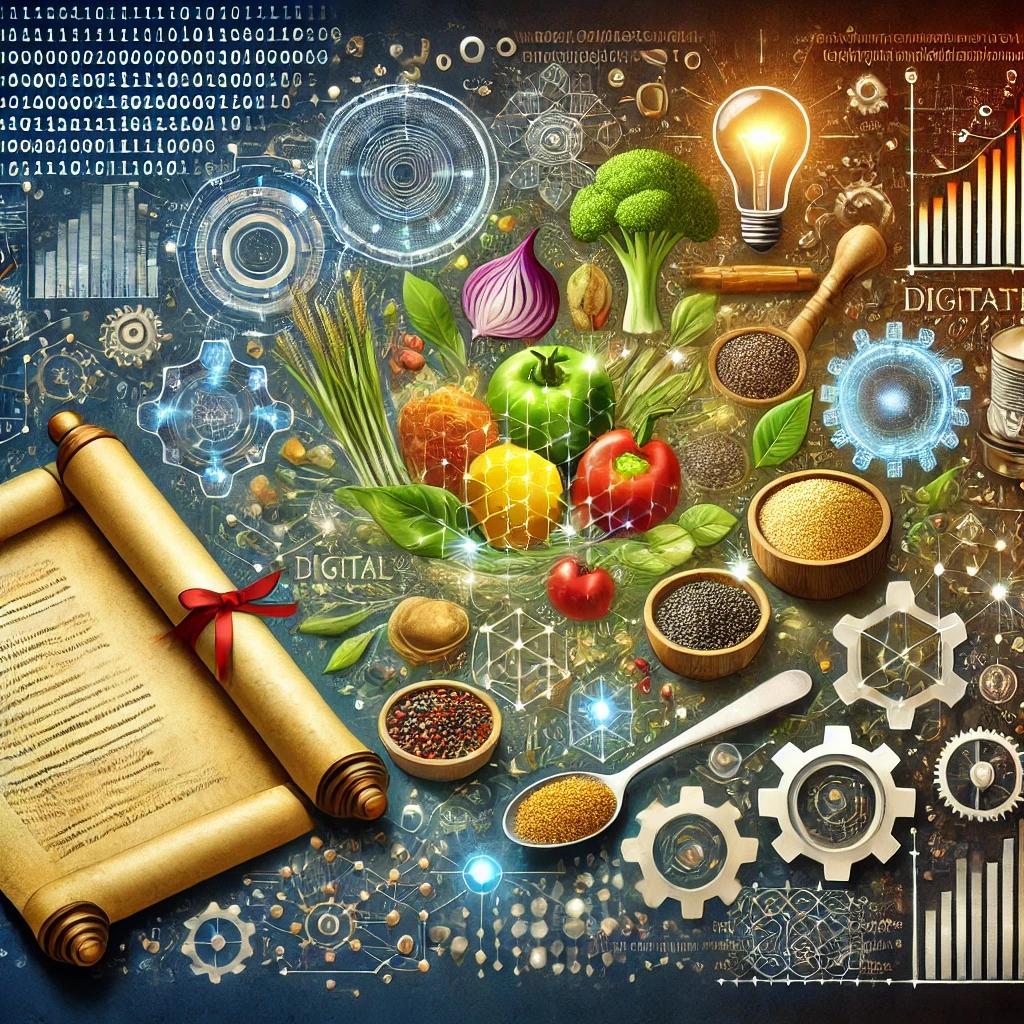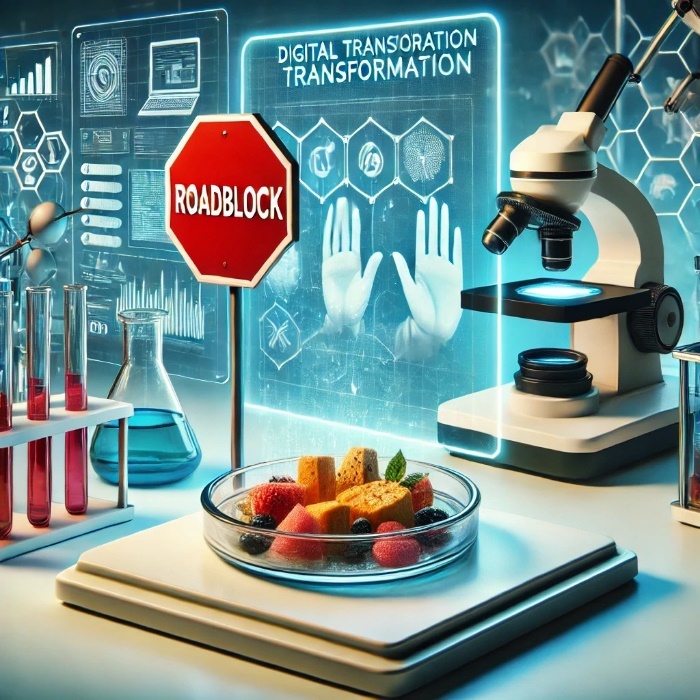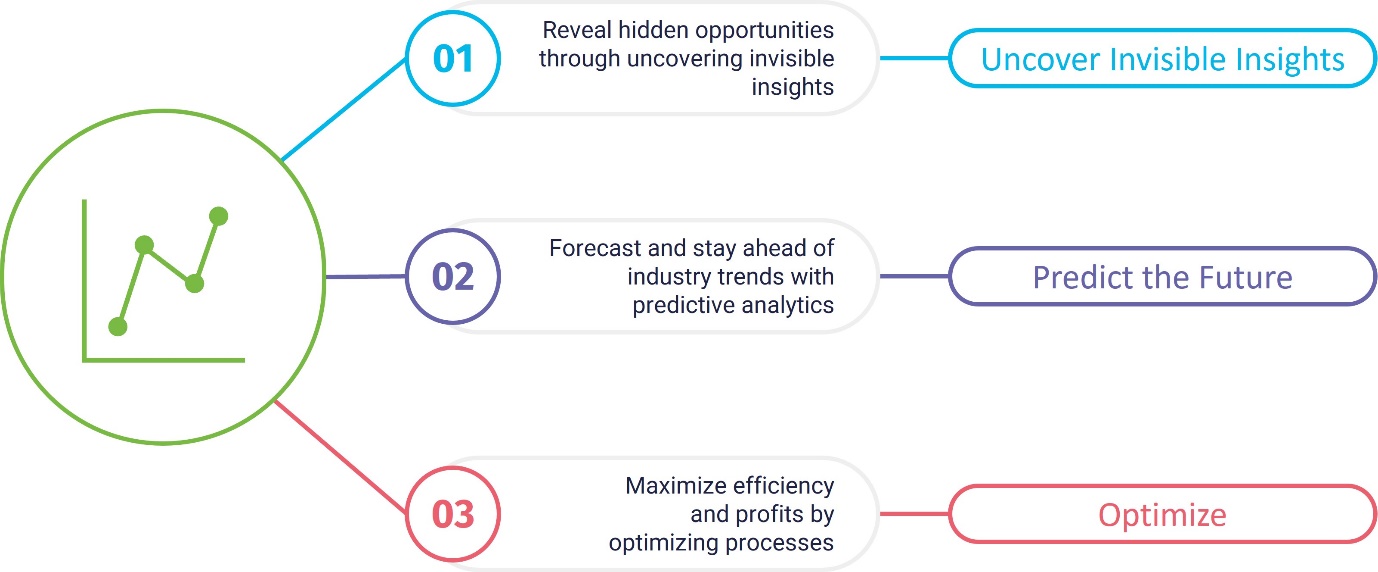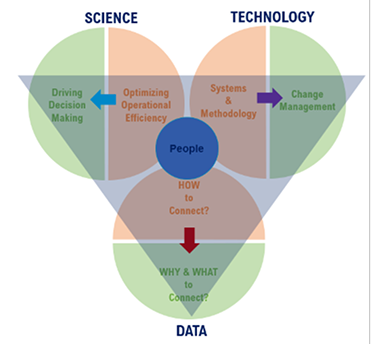In the Food & Beverage business, where flavors meld and trends simmer, the emergence of digital transformation has been akin to discovering a secret ingredient that elevates every dish. That being said, the Food & Beverage industry is rapidly catching on. For example, in 2020, already 88% of food companies in the European Union were fully aware of the advantages of digital transformation.1
The number of food & beverage companies beginning a digital transformation journey increases significantly every year. Why might that be?
The Food & Beverage industry faces unique challenges, such as rapidly changing consumer preferences, seasonal changes, demand for innovation, improved sustainability, traceability, food safety, and increasingly complex regulatory restrictions, making it well-suited for digitalization. Not only that, but production in the food industry is often artisanal and characterized by empirical knowledge. This applies not only to artisanal cheeses, for example, but also extends into various aspects of research and development (R&D), manufacturing, quality control (QC), and more. This drives a culture of hidden and non-shared knowledge, making digital transformation even more challenging and, at the same time, more valuable.
In short, if you haven’t started yet, it’s time to get moving, or you risk being left behind!
A Recipe for Digital Success
Digital transformation is not just about adopting new technologies—it's about creating a cohesive strategy that aligns with the specific needs of your business. Just like crafting a new recipe, it requires understanding your ingredients (data and processes) and knowing how to blend them harmoniously. By carefully integrating digital tools and platforms, companies can unlock unprecedented levels of efficiency, innovation, and competitiveness.
Imagine your organization as a kitchen. The goal is to streamline operations, optimize resources, and continuously improve the quality of the end product. The process of digitalization enables you to gather and analyze data, leading to better decision-making, enhanced product quality, and greater customer satisfaction. Whether it's automating routine tasks, enhancing data accuracy, or predicting trends, digital tools are essential for staying competitive in today's fast-paced market.

Blending Tradition with Innovation
In the diverse landscape of the Food & Beverage industry, digital transformation offers a unique opportunity to blend tradition with innovation. From artisanal producers who rely on empirical knowledge to global conglomerates with complex supply chains, the potential for digitalization to drive value is vast. Companies are increasingly recognizing the importance of integrating digital tools into their operations to maintain a competitive edge.
Many companies generate and collect substantial amounts of data. However, the ability to use this data intelligently is often hindered by limited integration—that is where the real value lies: using the data to further a company’s key goals. Data-driven decision-making is widespread within global conglomerates, often focusing on staying ahead of market trends and consumer preferences. Two key components of this include tools for R&D data collection, e.g., laboratory information management systems (LIMS) and electronic laboratory notebooks (ELNs), along with predictive analytics, often involving artificial intelligence (AI) and machine learning (ML) techniques. That being said, factors that often hold larger companies back from fully realizing digital transformation include the complexity of integrating disparate systems and legacy infrastructure, as well as cultural challenges.
Not Sure Where to Start?
Moving forward without understanding your current digital state can result in unanticipated roadblocks, akin to unexpected flavor profiles that disrupt the harmony of a food product. This can derail even the most detailed plans, resulting in additional costs—not to mention lost time. A thorough assessment of digital and data maturity is essential to ensure successful initiatives that bring value to the business. Additionally, developing a long-term digital strategy based on a current state evaluation and a future state vision will ensure you move in the right direction and realize both short- and long-term business value. Thoroughly evaluate your technology and infrastructure by focusing on key aspects of data management. This includes assessing your data management tools and systems, examining data capture methods and sources, analyzing data architecture and frameworks, evaluating data storage and retrieval capabilities, and scrutinizing data sharing infrastructure and integrated systems. The maturity assessment can be performed separately, focusing on specific dimensions: Architecture & Technology, Scientific Processes & Compliance, Governance & Delivery Model, Fair Data, as well as People and Organizational Culture—all based on your preferred focus areas.

Why Should Food & Beverage Companies Go Through a Digital Transformation?
The prospect of using data to optimize, predict, and even make intelligent decisions is tantalizing—a flavor-rich promise that beckons companies to embark on the digital transformation journey. By tailoring digital strategies to meet specific business needs, organizations can unlock the full potential of their operations.
Core Outcomes of Digital Transformation
Digital transformation has the potential to revolutionize the Food & Beverage industry, enabling companies to enhance various aspects of their operations. The core outcomes of digital transformation can be grouped into three categories: 1) uncover invisible insights, 2) predict the future, and 3) optimize.
1. Uncover Invisible Insights:
Imagine a food company using machine learning (ML) algorithms to analyze social media data and understand what consumers are saying about their products. With this information, the company can develop new products that better align with consumers' preferences and meet their needs, thereby increasing customer satisfaction and loyalty.
Data collected during R&D can also be used to uncover hidden insights. For example, a food company can analyze and identify correlations between product attributes and customer feedback.By using ML algorithms, the company can develop models that predict customer preferences and optimize product design to meet those needs. By using artificial intelligence (AI) algorithms, companies can identify patterns to predict and identify the most promising food product prototypes, enabling them to optimize resources and speed up the development process..

2. Predict the Future:
One predictive aspect focuses on product quality. For example, ML can be used to analyze product samples and predict their shelf life. This information helps companies optimize production processes, reduce waste, and improve product quality. Various aspects of product stability can also be predicted based on product composition and processing conditions. By using AI algorithms, companies can identify the factors that affect product stability and optimize production processes to maximize product shelf life.
3. Optimize:
Virtual and augmented reality can be incorporated into R&D processes to conduct tests and refine product prototypes. For instance, a food company may use virtual reality to test new packaging designs or simulate production processes before actual implementation, reducing costs, accelerating development and speeding up time-to-market for product innovations.
Data can also be used to optimize processes. For example, by using ML algorithms to analyze data collected from multiple sources, companies can identify bottlenecks and optimize resource allocation to speed up product development and reduce the costs of the R&D process. QC processes can be similarly optimized, allowing companies to detect anomalies in production and proactively enhance quality control to prevent issues from arising.
Conclusion
As the Food & Beverage industry continues to evolve, embracing digital transformation is no longer a choice but a necessity for companies aiming to thrive in an increasingly competitive landscape. The journey through digital transformation offers unparalleled opportunities to enhance operational efficiency, foster sustainable practices, and create exceptional customer experiences. By recognizing your current digital state and leveraging tailored strategies, your company can not only navigate the complexities of the modern market but also set new standards for innovation and excellence. Let’s view digital transformation not as a daunting challenge but as a flavorful adventure that promises new growth and success. Remember, in the dynamic world of Food & Beverage, staying static is not an option. Embrace change, savor the journey, and let’s transform the future of food together!
What Next?
Where should a company focus its efforts in digital transformation? Well, that depends on the current capabilities and the specific needs of the business. The steps chosen within the strategic roadmap need to offer strategic advantages that align withthe business and competitive landscape. Digitalization has the potential to radically transform every aspect of operations, but it is not a one-off, big-bang project. Implementing digitalization is actually about laying the groundwork for a program of continuous improvement, building your digital maturity both organizationally and from a business value perspective.
No matter your current digital state, Zifo can advise on the next steps and be your partner on your digital transformation journey to ensure that business value is added at every step of the way. Whether you would like to analyze your digital maturity, envision, or develop a roadmap.
Do you want to know where you stand in your digital transformation journey? Let's talk! Feel free to reach out to us at info@zifornd.com.
Source
1) Food Drink Europe Data & Trends. EU Food & Drink Industry 2020. Data & Trends of the European Food and Drink Industry 2020 - FoodDrinkEurope : FoodDrinkEurope .



